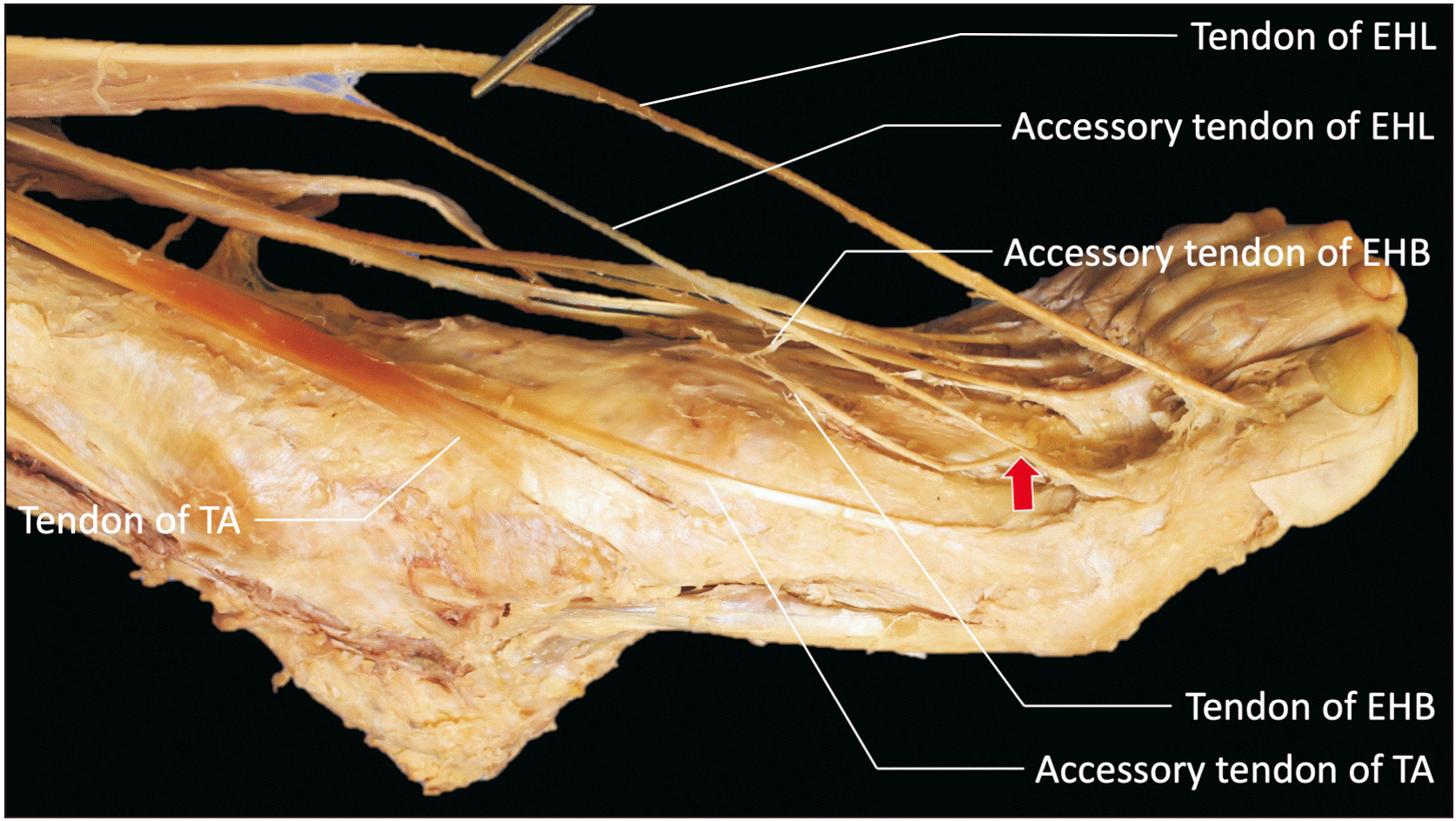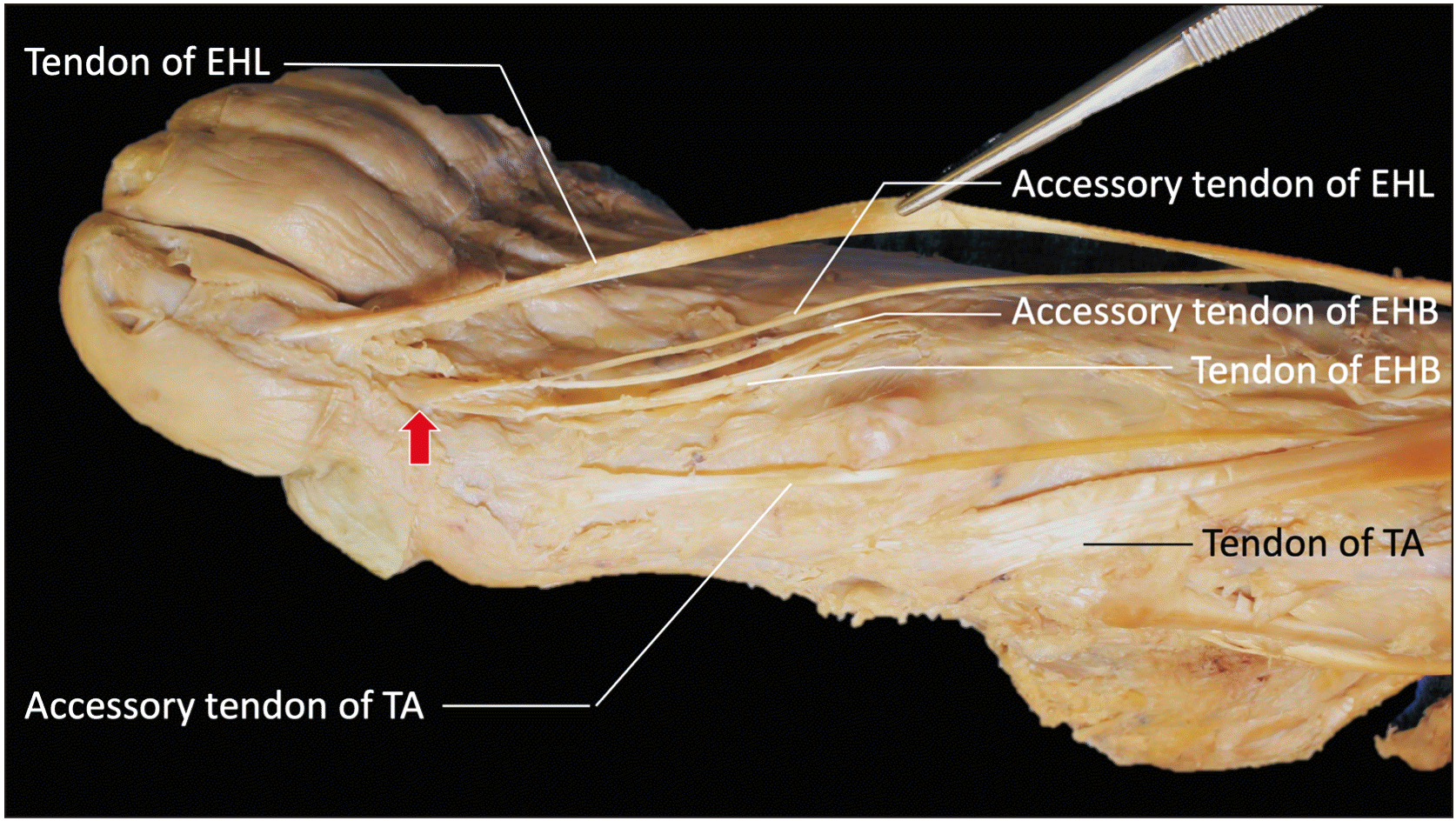1. Karauda P, Podgórski M, Paulsen F, Polguj M, Olewnik Ł. 2021; Anatomical variations of the tibialis anterior tendon. Clin Anat. 34:397–404. DOI:
10.1002/ca.23663. PMID:
32713016.

2. Drake RL, Vogl AW, Mitchell AWM. Drake RL, Vogl AW, Mitchell AWM, editors. 2020. Lower limb/leg. Gray's Anatomy for Students. 4th ed. Elsevier;Philadelphia: p. 612–27.
3. Htwe O, Swarhib M, Pei TS, Naicker AS, Das S. 2012; Congenital bilateral agenesis of the tibialis anterior muscles: a rare case report. Rom J Morphol Embryol. 53:657–9. PMID:
22990563.
4. Drake RL, Vogl AW, Mitchell AWM. Drake RL, Vogl AW, Mitchell AWM, editors. 2020. Lower limb/foot. Gray's Anatomy for Students. 4th ed. Elsevier;Philadelphia: p. 627–59.
5. DeLuca M, Boucher L. 2019; Morphological variations and accessory ossicles in the peroneal and tibialis muscles. Anat Cell Biol. 52:344–8. DOI:
10.5115/acb.19.030. PMID:
31598366. PMCID:
PMC6773904.

8. Musiał W. 1963; Variations of the terminal insertions of the anterior and posterior tibial muscles in man. Folia Morphol. 26:237–47.
9. Arthornthurasook A, Gaew Im K. 1990; Anterior tibial tendon insertion: an anatomical study. J Med Assoc Thai. 73:692–6. PMID:
2086718.
10. Brenner E. 2002; Insertion of the tendon of the tibialis anterior muscle in feet with and without hallux valgus. Clin Anat. 15:217–23. DOI:
10.1002/ca.10021. PMID:
11948958.

11. DiDomenico LA, Williams K, Petrolla AF. 2008; Spontaneous rupture of the anterior tibial tendon in a diabetic patient: results of operative treatment. J Foot Ankle Surg. 47:463–7. DOI:
10.1053/j.jfas.2008.05.007. PMID:
18725129.

13. Jerome JT, Varghese M, Sankaran B, Thomas S, Thirumagal SK. 2008; Tibialis anterior tendon rupture in gout--case report and literature review. Foot Ankle Surg. 14:166–9. DOI:
10.1016/j.fas.2007.12.001. PMID:
19083637.

14. Iwanaga J, Singh V, Ohtsuka A, Hwang Y, Kim HJ, Moryś J, Ravi KS, Ribatti D, Trainor PA, Sañudo JR, Apaydin N, Şengül G, Albertine KH, Walocha JA, Loukas M, Duparc F, Paulsen F, Del Sol M, Adds P, Hegazy A, Tubbs RS. 2021; Acknowledging the use of human cadaveric tissues in research papers: recommendations from anatomical journal editors. Clin Anat. 34:2–4. DOI:
10.1002/ca.23671. PMID:
32808702.





 PDF
PDF Citation
Citation Print
Print





 XML Download
XML Download